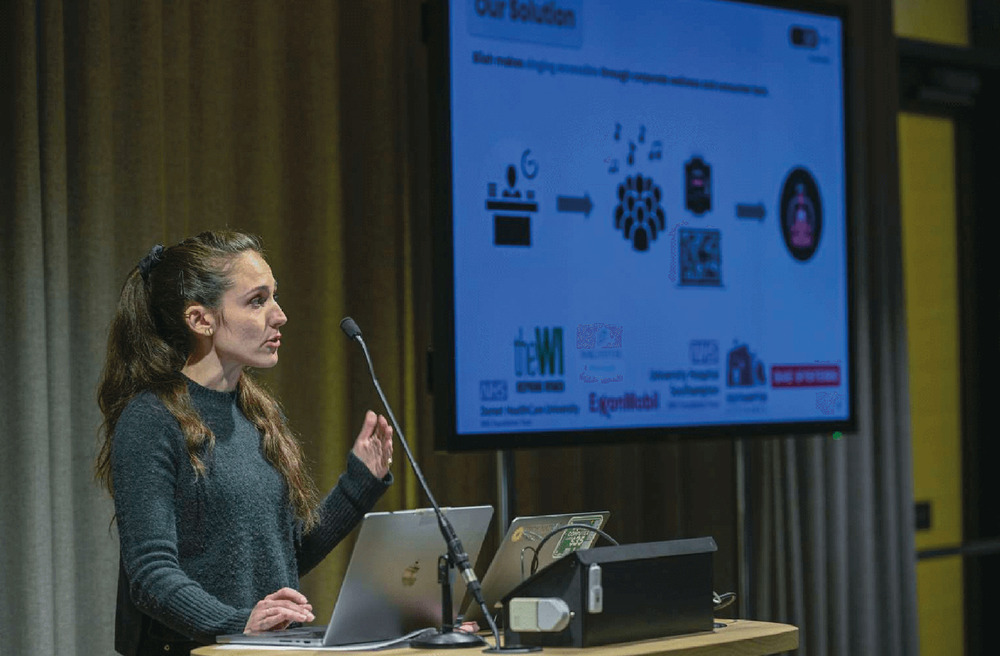Introduction
The range that a human voice can extend across isn’t the same for everyone. Some people can comfortably sing much higher or much lower notes than others. The tonal quality of your voice will depend in part on where your voice sits in this overall range, which is often split into ‘voice types’ or ‘categories’. Knowing your voice type helps you identify the songs that will sit nicely in your vocal range.
Why are our voices different?
Singing relies on a complicated system of cartilages and muscles, which vary in shape and size between singers, and need to be looked after to stay healthy. Vocal tracts have different dimensions, the relative sizing of resonating cavities are different, and there are substantial differences in terms of vocal fold length. Your voice develops through adolescence, and as you age as an adult.[3]
Singing beyond your comfortable range repeatedly, for prolonged periods, can cause serious damage.[4] It also isn’t much fun! Knowing your ‘voice type’ is one way to ensure that you are singing songs and parts that will feel comfortable and work best with your range.
Why do we need voice types?
Even if you aren’t singing in a group that has music split into parts, it is useful to know your voice type. It can make it easier to find music that feels comfortable to sing. It’s no fun regularly trying to sing songs that fall outside of your range, and can cause long term damage to your voice over time.
But why have these specific voice types evolved over time? Vocal range is only one part of the story. One of the joys of singing in a group is experiencing being part of the musical harmony – different notes and parts sung at the same time to create an overall effect – also called polyphonic music. The music unfolds, moving through chord progressions, as each voice type sings a different note in each of these chords.
What are voice types?
The voice types you might already have heard of are Soprano, Alto, Tenor and Bass. These terms originate from choral music, where multiple voice parts are sung simultaneously to create harmonies. The first written form of polyphony dates back to the 10th century.
This piece would have been performed by just two male voices, but choral music has evolved over the years to encompass a wide range of genres, voices and styles.
The choir as an instrument with a specific sound is an important part of European musical culture and heritage. Voice classification – assigning names and characteristics to defined vocal ranges –evolved from polyphonic church music in the 15th century, the four voice ‘parts’ or ‘types’ emerging from choral music of the 16th and 17th century[5].
There are further voice types, especially when considering different musical genres, for example opera. You can read more about other voice types and terminology different voice types, including contralto, mezzo-soprano and countertenor, with examples from all different types of music here Understanding Vocal Range, Vocal Registers, and Voice Type: A Glossary of Vocal Terms. [7]
Each voice type has an important role in the harmony. Many chords can be described by just 3 notes, also known as a ‘triad’. For example, the C major triad is made up of the notes C, E and G. If these notes are played together, you hear the chord ‘C major’. Adding a fourth note to the triad increases the harmonic complexity and the emotion that can be conveyed. With four voice types, choral music can achieve the wide range of harmonic complexity that is part of the emotion and mood conveyed by the music [see our previous post Music, Mood and Emotion].
Bass, the lowest voice type in the vocal range, often sings what we call the ‘root’ of a chord. For a chord of C major this would be ‘C’. It secures the harmony and provides a pleasing bass line as the music progresses. Sopranos often sing what we would describe as the tune or melody. The tenor and alto parts then complete the other notes in the chords – these can be challenging parts to sing as they provide the harmonic texture, but it can be very satisfying singing these ‘crunchy’ notes that completely change the character of a chord.
Of course, these are generalisations, and composers will shake this up. However, all four voice types are vital to create the music as the composer intended, and singing them together as part of a group takes practice. Learning your part in isolation is only part of the process, being able to sing it with the other parts, and understand how your part fits with the others is equally important.
Part of the uplifting experience of singing in a group is when all of the parts across the vocal range come together to form a ‘textured’ sound where everyone’s voice is part of a harmonic progression. This makes all of the practice worthwhile.
For a fun way to explore voice types (I can’t stop playing with this!), visit Google Arts & Culture Blob Opera[1].

How do the voice types work together?
The voice types Soprano, Alto, Tenor and Bass cover approximately three and a half octaves. One way to think about this is to imagine the voice types mapped onto a piano keyboard, which generally contains around 7 octaves.
We can describe musical notes using a letter and a number. Knowing the letter of the note, e.g. ‘C’, isn’t enough information to know exactly which note on the keyboard it is. We need the letter as well, for example ‘middle C’, the note in the middle of the keyboard, is ‘C4’. This is called scientific pitch notation. You will sometimes see scientific pitch notation used to describe voice types, as shown above. Sing along to the notes displayed in the video below to get a starting point on what your range might be.
Finding your voice type
Remember that your ‘voice type’ is where you feel most comfortable singing. We can all squeeze out a note that is higher or lower than feels comfortable, but it might not sound great, and to sing like this regularly can damage your voice, especially without training and practice. Your voice part is the one closest to the range where you can project a sustained, strong, controlled sound without straining!
Soprano and alto tend to be female voices, and tenor and bass male, but not everyone’s voice falls neatly into one of the four voice types above[6, 8]. Voice type ranges overlap, so some notes are in the top of one range, and also in the bottom of the next one. The timbre or tone of your voice may also make it feel closer to one classification than another – this is important in choral singing where voices singing the same part need to blend together.
I took the video test above and could comfortably sing as low as C3 and as high as C5 – I am mid-way between alto and tenor. I can comfortably sing many alto parts, but some parts are too high and I can feel myself straining in places, or I just can’t get the highest notes. Similarly I can sing a lot of tenor parts, but sometimes a part goes too low and I can’t quite reach some of the bottom notes. This is a contralto female voice. I love to sing songs by Sade, Annie Lennox (from The Eurythmics) and Chrissie Hynde (from The Pretenders) or jazz standards by singers like Sarah Vaughn and Peggy Lee. When I join a singing group where you sing in parts, I usually start with alto, but might then move down to tenor for some or all of the material, depending on the repertoire.
It can take time to find your voice type, and it is worth experimenting if you haven’t sung much before. Even aspiring professional singers can struggle to categorise their voices early in their career[2] and voice type can change with age and changes in health.
Another way to get a feel for your voice type is to identify the songs and artists that you most enjoy singing along with. We are building Biiah Spotify playlists to help new singers match a song or artist to their voice type (bearing in mind that some singers can sing across more than one voice type – so the song you like most is as important as the artist you love). Which song or artist best matches your voice type? Tell us @Biiah, we’d love to know!
Author: Dr. Sam Duffy.
References
[1] Blob Opera — Google Arts & Culture: A machine learning experiment by David Li in collaboration with Google Arts & Culture
[2] Davidson, J.W. 2017. The music practitioner: Research for the music performer, teacher and listener.
[3] Kayes, G. 2019. Structure and Function of the Singing Voice. The Oxford Handbook of Singing. 2–30.
[4] Lã, F.M.B. and Gill, B.P. 2019. Physiology and its Impact on the Performance of Singing. The Oxford Handbook of Singing. 66–84.
[5] Parrott, A. 2012. A Brief Anatomy of Choirs c.1470-1770. The Cambridge Companion to Choral Music. A. de Quadros, ed. Cambridge University Press. 7–26.
[6] Understanding Different Voice Types
[7] Understanding Vocal Range, Vocal Registers, and Voice Type: A Glossary of Vocal Terms
[8] Voice classification: system or art? | OUPblog: 2018.








